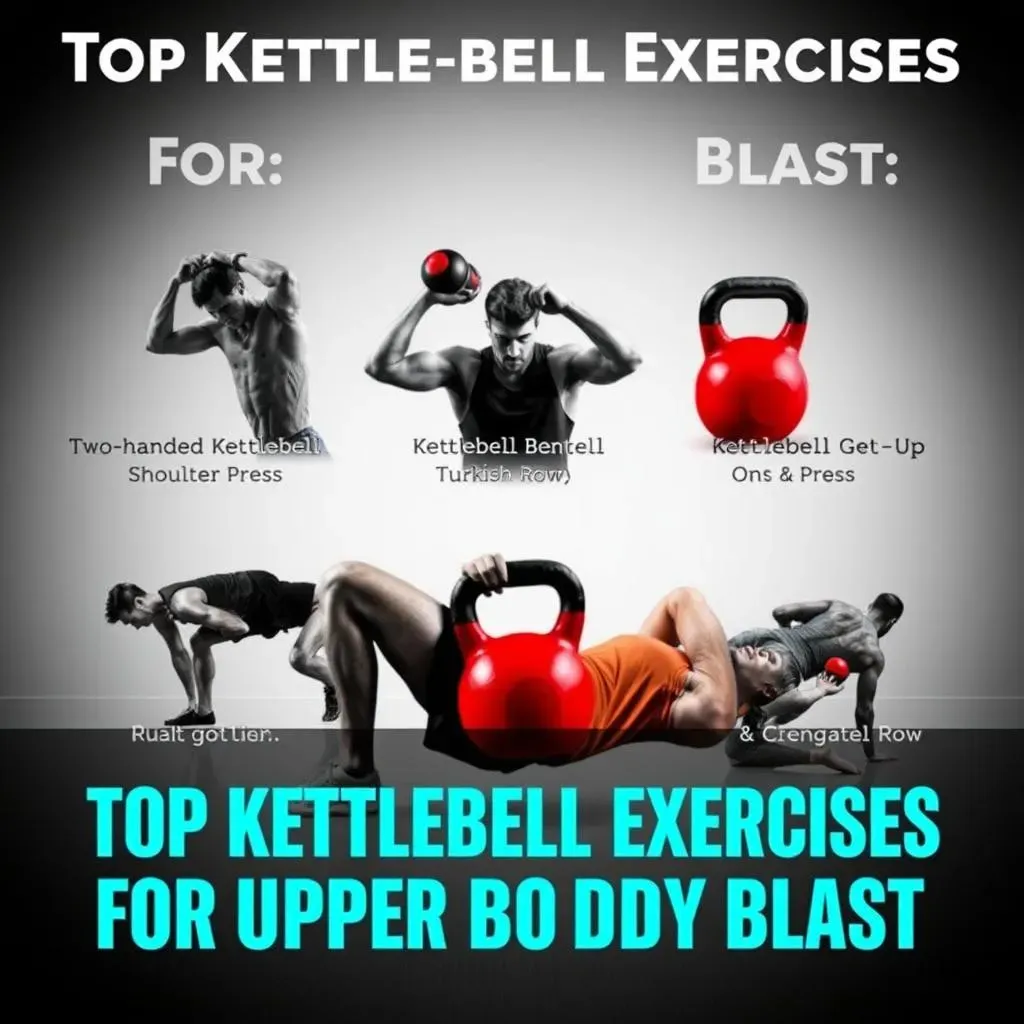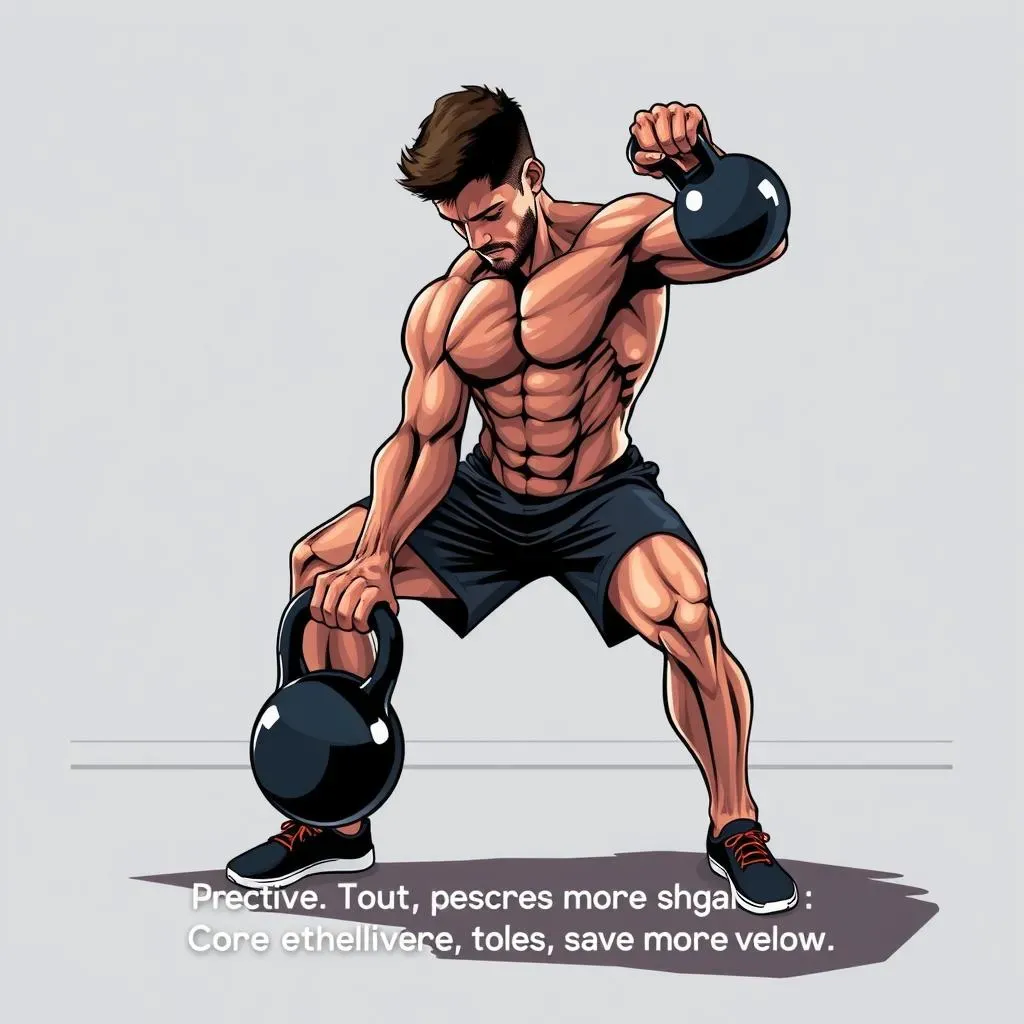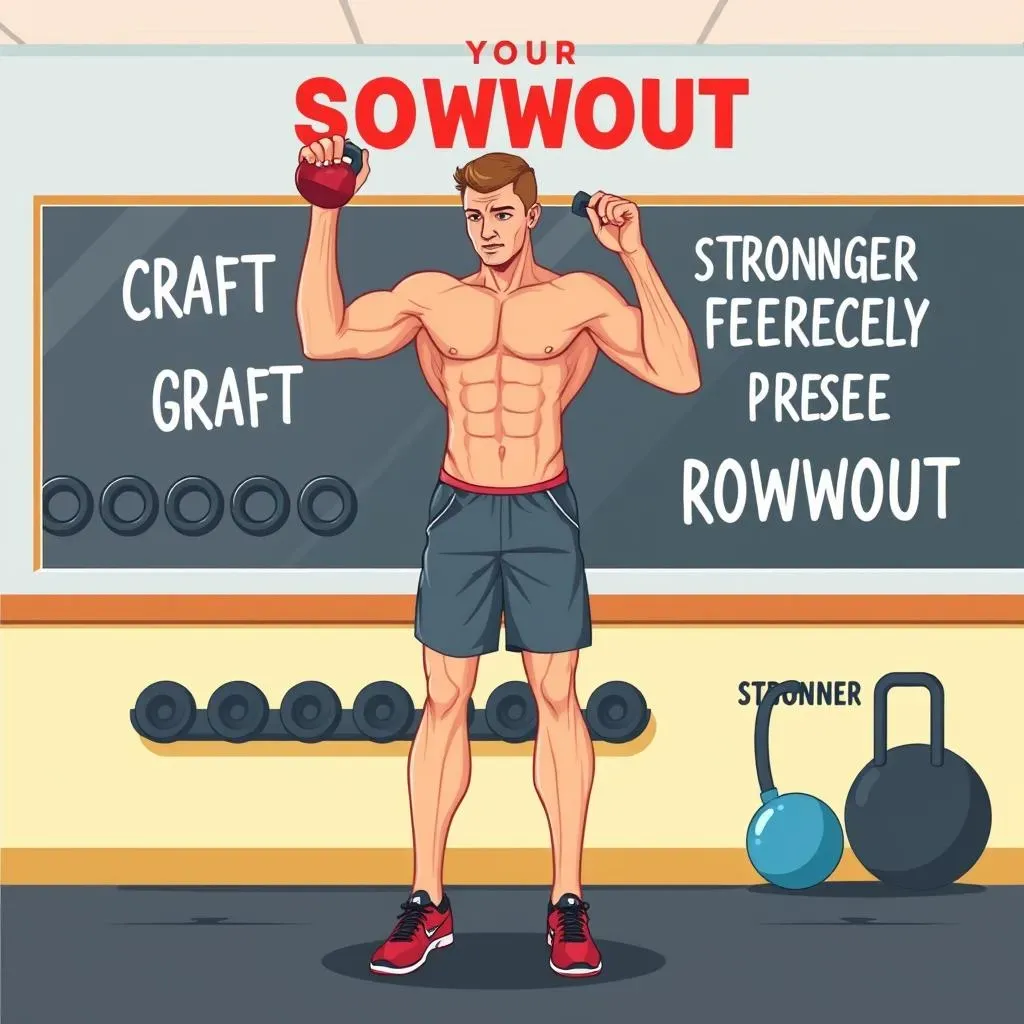Table of Contents
Hey there, fitness fanatics! Ever feel like your upper body workouts are stuck in a rut? I get it. That's why I'm stoked to share my passion for kettlebells and how they've completely changed my training game, especially when it comes to building serious upper body strength. Forget those bulky machines; we're diving into the world of the single kettlebell. This isn't just about lifting; it's about moving better, feeling stronger, and unlocking a whole new level of functional fitness. In this article, we'll explore some awesome moves that'll work your chest, back, shoulders, and arms, all with just one trusty kettlebell. I'll also explain why this simple piece of equipment is so effective, and how you can create your own killer kettlebell upper body workout routine. So, ditch the dumbbells for a bit, and let's get swinging!
Top Kettlebell Exercises for an Upper Body Blast

Top Kettlebell Exercises for an Upper Body Blast
Alright, let's talk about the good stuff – the exercises that'll actually get you those upper body gains. I'm not about fluff; these are the moves that I've found pack the most punch. First up, we've got the two-handed kettlebell shoulder press. It's a classic for a reason – it hits your shoulders hard, and you'll feel it working those muscles. Then there's the kettlebell bent-over row; it's not just for your back, it helps build a solid foundation for all your other lifts. Don't even get me started on the Turkish get-up! It might look a bit weird, but trust me, it's a full-body exercise that will test your strength, coordination, and even your mental toughness. We'll also be looking at other great moves like the kettlebell push-up, the clean and press, and the renegade row. These aren't just random movements; they are going to build real strength.
Exercise | Target Muscles |
|---|---|
Two-Handed Kettlebell Shoulder Press | Shoulders, Triceps |
Kettlebell Bent-Over Row | Back, Biceps |
Kettlebell Turkish Get-Up | Full Body, Core |
Kettlebell Push-Up | Chest, Shoulders, Triceps |
Kettlebell Clean and Press | Shoulders, Back, Biceps |
Kettlebell Renegade Row | Back, Core, Biceps |
Why a Single Kettlebell is Your Secret Weapon for Upper Body Gains

Why a Single Kettlebell is Your Secret Weapon for Upper Body Gains
It's More Than Just a Weight
Okay, so you might be thinking, "A kettlebell? What's the big deal?" Well, it's not just another piece of gym equipment. The way a kettlebell's weight is distributed – that cannonball with a handle – makes it totally different from a dumbbell. It's not just about lifting; it's about controlling the weight, which engages your core and stabilizer muscles way more. And that's where the magic happens. It's like you're not just building strength, but also learning how to move your body as a single, powerful unit. I've found that this kind of training translates so much better into real-life activities. It's not just about looking good; it's about being functionally strong.
Unlocking Full-Body Coordination
Another reason I'm obsessed with single kettlebell training? It forces your body to work as a team. When you're doing a shoulder press with a kettlebell in one hand, your core is working overtime to keep you stable. It's not just your shoulder getting a workout; it's your whole body. This helps improve your balance and coordination, things you probably never thought about when you were just curling dumbbells. Plus, the unique shape of the kettlebell means that the weight is often moving around in a way that challenges you in new and different ways. Think of it like this: if dumbbells are a precise paint brush, kettlebells are a big, messy sponge that soaks up all the strength. You're building a more well-rounded strength, not just isolated muscle groups.
Crafting Your Perfect Kettlebell Upper Body Workout Routine

Crafting Your Perfect Kettlebell Upper Body Workout Routine
Starting Smart: Warm-Up and Form
Okay, before you start swinging that kettlebell like a maniac, let's talk about warming up. I'm serious, don't skip this part! A few minutes of light cardio, like jumping jacks or arm circles, will get your blood flowing. Then, do some dynamic stretches, like arm swings and torso twists. This gets your muscles ready for action and reduces the risk of injury. Also, let's chat about form. It's way more important than lifting heavy. If you're not doing the exercises correctly, you're not only wasting your time, but you're also setting yourself up for pain. Start with a lighter weight so you can master the movements. I always say, it's better to lift light with good form than to lift heavy with bad form.
Building Your Workout: Exercises and Sets
Now for the fun part: putting together your workout! I like to pick 3-4 exercises that hit all the major muscle groups in my upper body. So, we are talking about a mix of pushing (like presses and push-ups) and pulling (like rows) movements. For sets and reps, I usually start with 3 sets of 8-12 reps. But it's not a hard rule. If you're a beginner, start with fewer reps and sets, or if you're feeling super strong you can push for more. The key is to listen to your body and to not be a hero. If you can barely do 6 reps with good form, don't try to force out 12. It's all about finding what works for you. And please, take breaks between sets! You'll be able to keep your form better if you're not completely gassed out.
Workout Component | Recommendation |
|---|---|
Warm-up | 5-10 minutes of light cardio and dynamic stretching |
Exercises | 3-4 exercises targeting chest, back, shoulders, and arms |
Sets | 3 sets |
Reps | 8-12 reps (adjust based on your strength level) |
Rest | 60-90 seconds between sets |
Progressing Over Time: Weight and Intensity
Alright, you've been working out for a while, and you're feeling stronger. That's amazing! Now it's time to think about how to keep making progress. Don't just stick with the same weight forever, or you'll stop seeing results. When your current weight starts to feel easy, it's time to increase it. But, again, be smart about it. Increase the weight gradually. For example, if you're doing the shoulder press with a 15-pound kettlebell, go up to 20. Also, try changing up the intensity. You can do this by shortening the rest time between sets or by using different variations of the exercises. The important thing is to keep challenging yourself and to not let your body get too comfortable. And remember, consistency is the secret sauce. Keep at it, and you'll be amazed at what you can achieve.